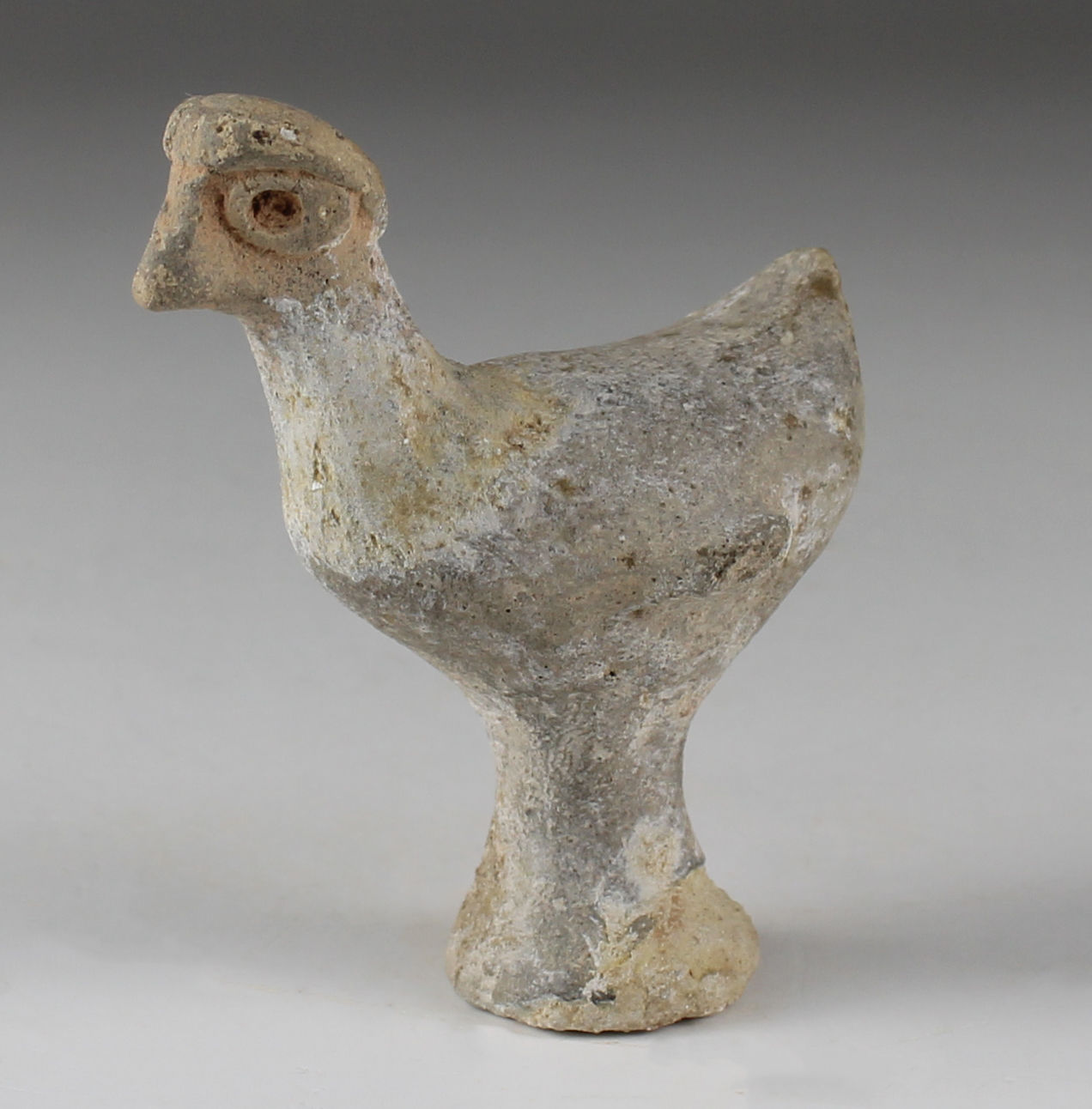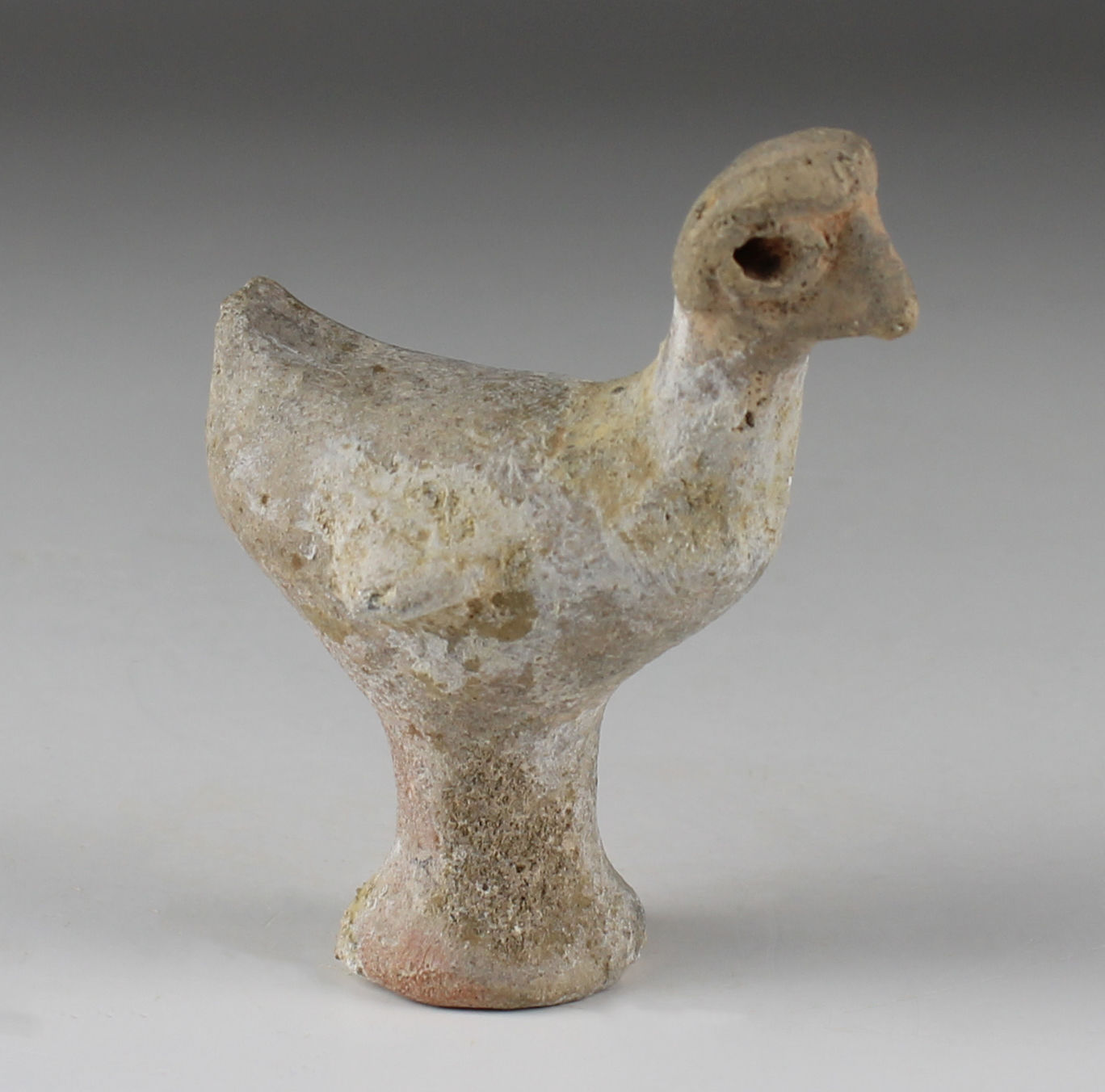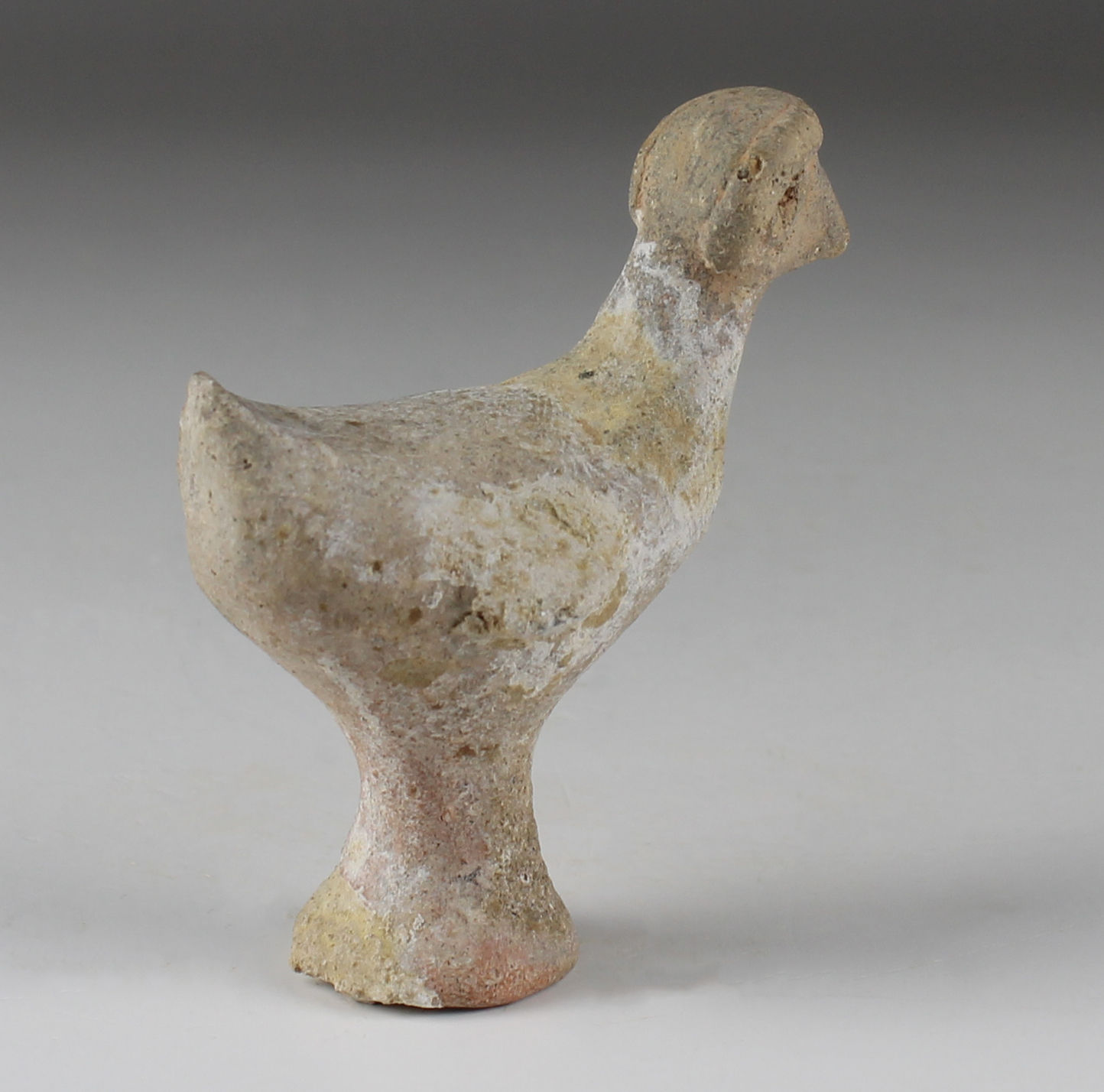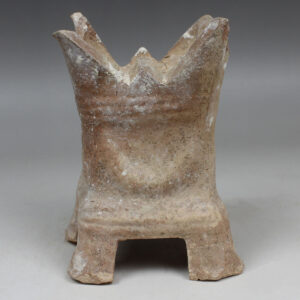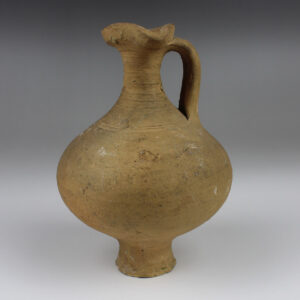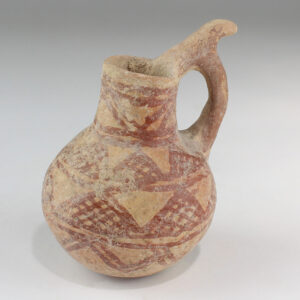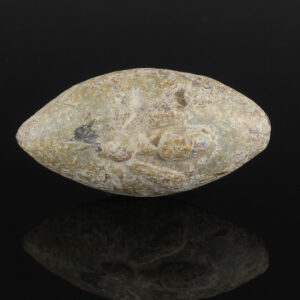Description
| ITEM | Statuette of a bird |
| MATERIAL | Pottery |
| CULTURE | Bronze Age, Syro-Hittite |
| PERIOD | 2nd Millenium B.C |
| DIMENSIONS | 62 mm x 50 mm |
| CONDITION | Good condition, restored |
| LOCATION | Museum Exhibiton of the Arbeitsgruppe für Biblische Archäologie, Mainz (Germany) |
The states that are called Syro-Hittite, Neo-Hittite (in older literature), or Luwian-Aramean (in modern scholarly works),were Luwian and Aramean regional polities of the Iron Age, situated in southeastern parts of modern Turkey andnorthwestern parts of modern Syria, known in ancient times as lands of Hatti and Aram. They arose following the collapse ofthe Hittite New Kingdom in the 12th century BCE, and lasted until they were subdued by the Assyrian Empire in the 8thcentury BCE. They are grouped together by scholars, on the basis of several cultural criteria, that are recognized as similarand mutually shared between both societies, northern (Luwian) and southern (Aramean). Cultural exchange between thosesocieties is seen as a specifi c regional phenomena, particularly in light of signifi cant linguistic distinctions between twomain regional languages, with Luwian belonging to the Anatolian group of Indo-European languages, and Arameanbelonging to the Western Semitic group of Semitic languages. Several questions that are related to regional grouping ofLuwian and Aramean states are viewed diff erently among scholars, including some views that are critical towards suchgrouping in general.
One of the most contested issues within the field is related to the choice of proper terms for this group of states. On thatissue, scholars are divided into several categories. Some prefer terms that are derived from endonymic (native) names forLuwians and Arameans, thus using terms like Luwian-Aramean or Aramean-Luwian. Others prefer to use terms that arederived from various exonymic (foreign) names, thus proposing designations like Syrian-Anatolian or Syro-Anatolian, basedon Greek term Anatolia, combined with anachronistic application of Syrian labels, in the sense that was introduced muchlater, by ancient Greeks, as their designation for Arameans and their land (Aram). Such preference for foreign terms,advocated by some western scholars, is viewed as being culturally biased, and thus insensitive towards native (endonymic)terminology. Some scholars still use older terms, like Syro-Hittite and Neo-Hittite, but those terms have several additionalmeanings in scholarly literature. More precise term Post-Hittite is also used, as a broad designation for the entire period ofAnatolian history spanning from the 12th to the 6th century BCE.
Anachronistic uses of Syrian labels in modern scholarly literature were additionally challenged after the recent discovery ofthe bilingual Çineköy inscription from the 8th century BCE, written in Luwian and Phoenician languages. The inscriptioncontained references to the neighbouring Assyria, inscribed in a specifi c form that renders as Syria, thus providingadditional (and in the same time the oldest) evidence for the dominant scholarly view on the origins and primary meaningsof the term Syria, that originated as an apheretic form of the term Assyria, and was redefi ned much later, by ancient Greeks,who introduced a territorial distinction between two names, and started to use term Syria as a specifi c designation forwestern regions (ancient Aram). For ancient Luwians, Syria was designation for Assyria proper, thus revealing the laterGreek use of the term Syria as very diff erent from its original meaning, and also anachronistic if used in modern scientifi cdescriptions of historical realities, related to Luwian and Aramean states of the Iron Age.


